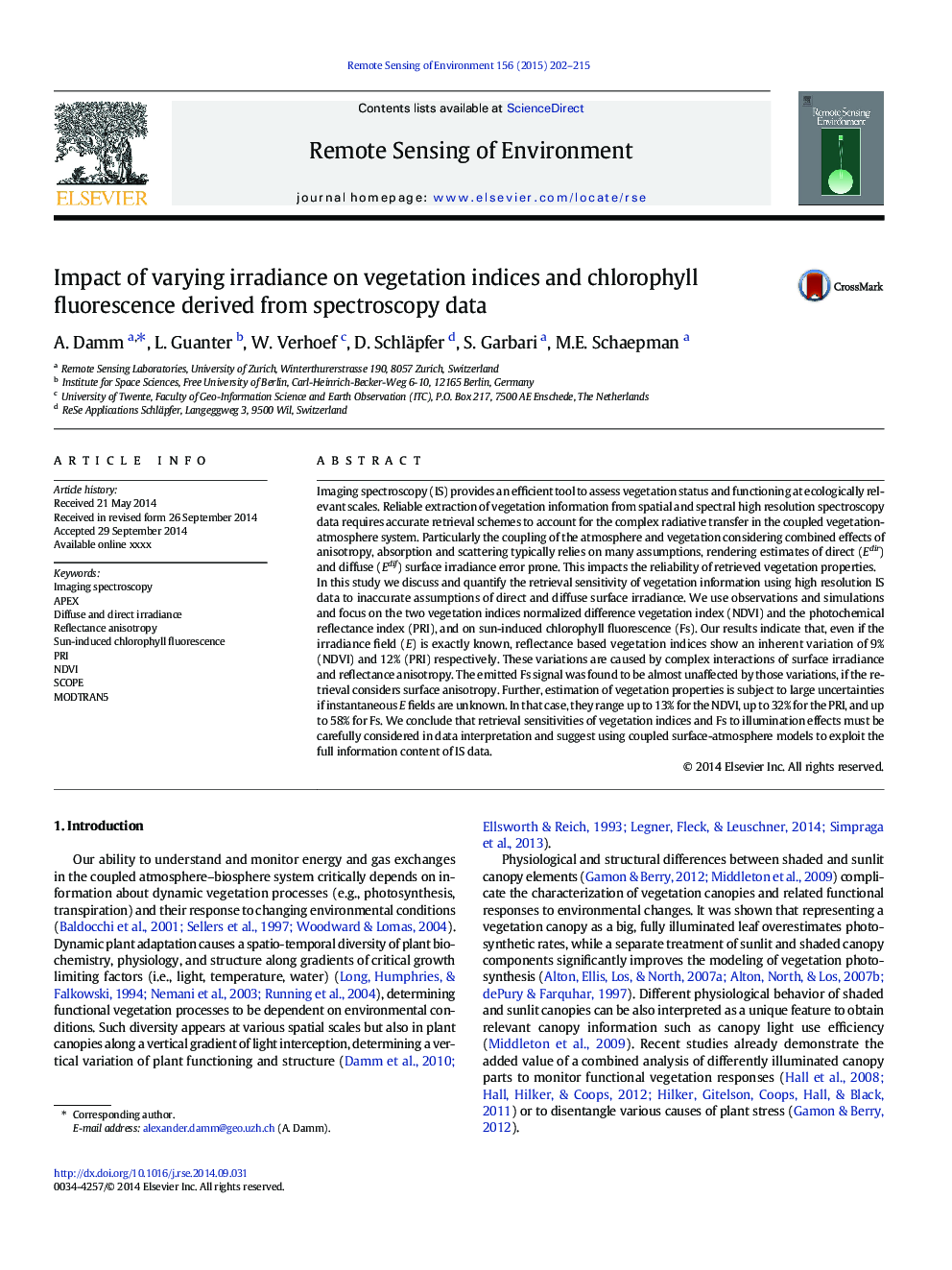| Article ID | Journal | Published Year | Pages | File Type |
|---|---|---|---|---|
| 6346518 | Remote Sensing of Environment | 2015 | 14 Pages |
Abstract
In this study we discuss and quantify the retrieval sensitivity of vegetation information using high resolution IS data to inaccurate assumptions of direct and diffuse surface irradiance. We use observations and simulations and focus on the two vegetation indices normalized difference vegetation index (NDVI) and the photochemical reflectance index (PRI), and on sun-induced chlorophyll fluorescence (Fs). Our results indicate that, even if the irradiance field (E) is exactly known, reflectance based vegetation indices show an inherent variation of 9% (NDVI) and 12% (PRI) respectively. These variations are caused by complex interactions of surface irradiance and reflectance anisotropy. The emitted Fs signal was found to be almost unaffected by those variations, if the retrieval considers surface anisotropy. Further, estimation of vegetation properties is subject to large uncertainties if instantaneous E fields are unknown. In that case, they range up to 13% for the NDVI, up to 32% for the PRI, and up to 58% for Fs. We conclude that retrieval sensitivities of vegetation indices and Fs to illumination effects must be carefully considered in data interpretation and suggest using coupled surface-atmosphere models to exploit the full information content of IS data.
Keywords
Related Topics
Physical Sciences and Engineering
Earth and Planetary Sciences
Computers in Earth Sciences
Authors
A. Damm, L. Guanter, W. Verhoef, D. Schläpfer, S. Garbari, M.E. Schaepman,
